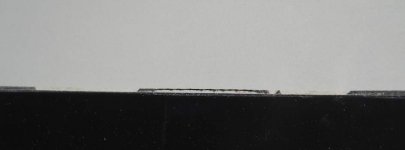oscar
Well-known member
I’m walking a fine line here.
I want to share what I’ve learned and save many of you from heartache and MAJOR financial loss. What I don’t want is to be perceived as a Heartland basher and get my posterior removed from this forum. Let’s just say that HL and I have a major difference of opinion about what are acceptable practices and what “built to last" means. I will here agree to disagree, again, in the interest of sharing important information which I think would benefit ALL owners.
The following is all fact, and not opinion.
In the past, as in for the last many decades, windows, storage access doors and sundry other penetrations of the wall had a fat layer of butyl tape, or some form of bedding compound between the flange and the skin of the camper.
This is no longer the case. Windows on our units have a 1/2” wide and about 1/16” thick foam strip which is adhesive on one side to adhere it to the window flange. If it is even slightly out of whack it will not keep water out. The trim between the side wall and the skirting has nothing. The Facias around the slides have some bedding deep down, but if water gets behind the facia at the top it has nowhere to go and will cause damage, quickly. Storage door flanges, as far as I can tell have nothing. The same goes for fridge vents and whatever other wall penetrations there are. Not sure about doors, haven't taken one out, yet.
The black, thin, silicone bead at the top of doors, windows, hatches, trim, facias….. wherever, is the primary and ONLY defense against water penetration. It is is CRUCIAL to keeping the water out. If compromised the water WILL get in and WILL cause serious damage, quickly, as in weeks quickly. Because this bead of caulk is very small and only on the surface there may be imperfections or voids not visible to the naked eye……
I was informed, at the factory, that these caulking beads, all of them, the whole unit, need to be inspected every 90 days.
I cannot over-emphasize the importance of checking EVERY little bit of these caulk beads on a regular basis, because they are your ONLY line of defense against water intrusion. The damage that can occur if neglected is impressive in scope and speed.
That is all.
I want to share what I’ve learned and save many of you from heartache and MAJOR financial loss. What I don’t want is to be perceived as a Heartland basher and get my posterior removed from this forum. Let’s just say that HL and I have a major difference of opinion about what are acceptable practices and what “built to last" means. I will here agree to disagree, again, in the interest of sharing important information which I think would benefit ALL owners.
The following is all fact, and not opinion.
In the past, as in for the last many decades, windows, storage access doors and sundry other penetrations of the wall had a fat layer of butyl tape, or some form of bedding compound between the flange and the skin of the camper.
This is no longer the case. Windows on our units have a 1/2” wide and about 1/16” thick foam strip which is adhesive on one side to adhere it to the window flange. If it is even slightly out of whack it will not keep water out. The trim between the side wall and the skirting has nothing. The Facias around the slides have some bedding deep down, but if water gets behind the facia at the top it has nowhere to go and will cause damage, quickly. Storage door flanges, as far as I can tell have nothing. The same goes for fridge vents and whatever other wall penetrations there are. Not sure about doors, haven't taken one out, yet.
The black, thin, silicone bead at the top of doors, windows, hatches, trim, facias….. wherever, is the primary and ONLY defense against water penetration. It is is CRUCIAL to keeping the water out. If compromised the water WILL get in and WILL cause serious damage, quickly, as in weeks quickly. Because this bead of caulk is very small and only on the surface there may be imperfections or voids not visible to the naked eye……
I was informed, at the factory, that these caulking beads, all of them, the whole unit, need to be inspected every 90 days.
I cannot over-emphasize the importance of checking EVERY little bit of these caulk beads on a regular basis, because they are your ONLY line of defense against water intrusion. The damage that can occur if neglected is impressive in scope and speed.
That is all.


